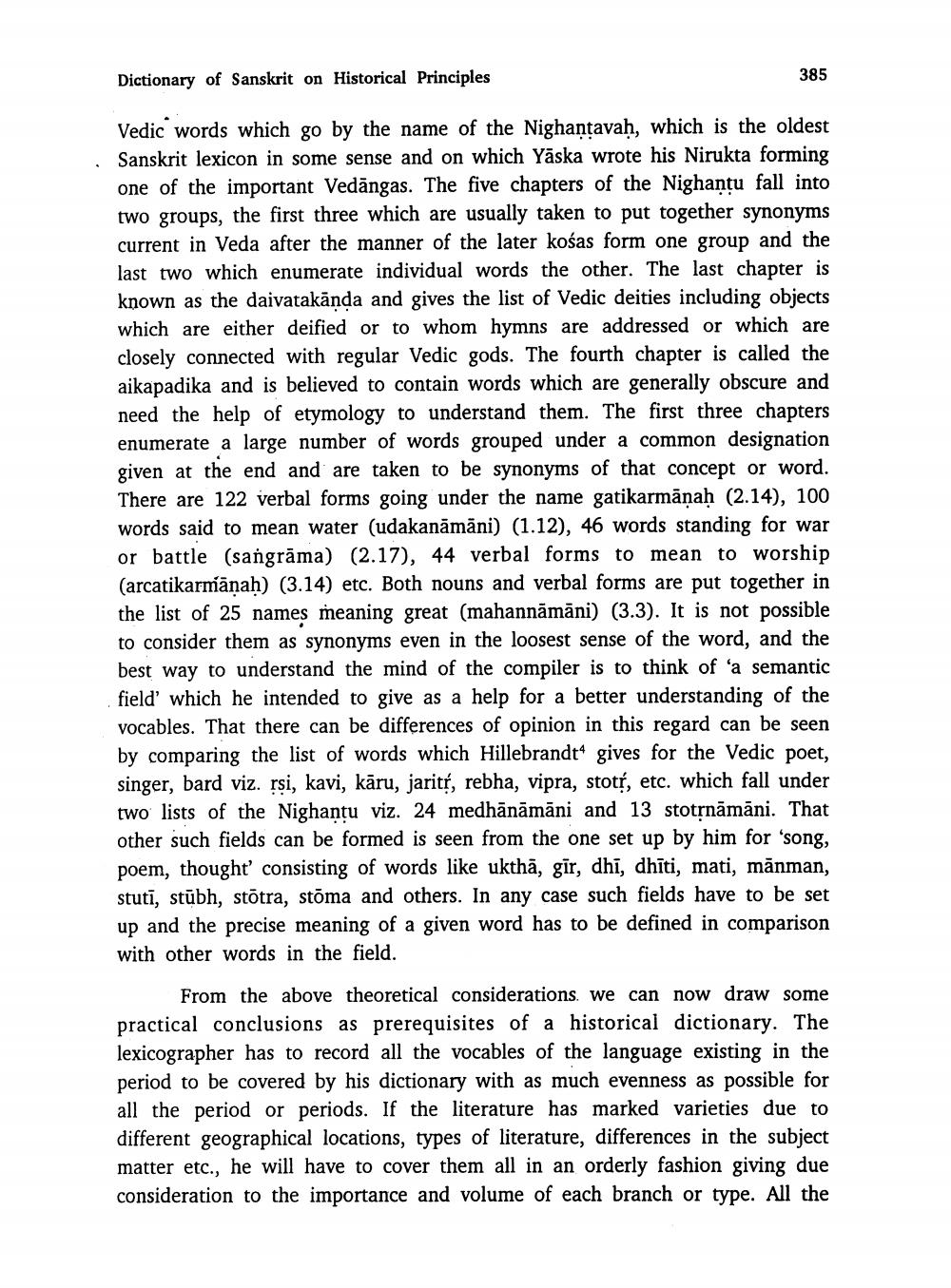________________
Dictionary of Sanskrit on Historical Principles
385
Vedic words which go by the name of the Nighantavah, which is the oldest Sanskrit lexicon in some sense and on which Yāska wrote his Nirukta forming one of the important Vedāngas. The five chapters of the Nighantu fall into two groups, the first three which are usually taken to put together synonyms current in Veda after the manner of the later kośas form one group and the last two which enumerate individual words the other. The last chapter is known as the daivatakānda and gives the list of Vedic deities including objects which are either deified or to whom hymns are addressed or which are closely connected with regular Vedic gods. The fourth chapter is called the aikapadika and is believed to contain words which are generally obscure and need the help of etymology to understand them. The first three chapters enumerate a large number of words grouped under a common designation given at the end and are taken to be synonyms of that concept or word. There are 122 verbal forms going under the name gatikarmāṇaḥ (2.14), 100 words said to mean water (udakanāmāni) (1.12), 46 words standing for war or battle (sangrāma) (2.17), 44 verbal forms to mean to worship (arcatikarmanah) (3.14) etc. Both nouns and verbal forms are put together in the list of 25 names meaning great (mahannāmāni) (3.3). It is not possible to consider them as synonyms even in the loosest sense of the word, and the best way to understand the mind of the compiler is to think of 'a semantic field' which he intended to give as a help for a better understanding of the vocables. That there can be differences of opinion in this regard can be seen by comparing the list of words which Hillebrandt“ gives for the Vedic poet, singer, bard viz. rsi, kavi, kāru, jaritr, rebha, vipra, stotr, etc. which fall under two lists of the Nighantu viz. 24 medhānāmāni and 13 stotrnāmāni. That other such fields can be formed is seen from the one set up by him for ‘song, poem, thought' consisting of words like ukthā, gir, dhi, dhīti, mati, mănman, stutī, stūbh, stötra, stoma and others. In any case such fields have to be set up and the precise meaning of a given word has to be defined in comparison with other words in the field.
From the above theoretical considerations. we can now draw some practical conclusions as prerequisites of a historical dictionary. The lexicographer has to record all the vocables of the language existing in the period to be covered by his dictionary with as much evenness as possible for all the period or periods. If the literature has marked varieties due to different geographical locations, types of literature, differences in the subject matter etc., he will have to cover them all in an orderly fashion giving due consideration to the importance and volume of each branch or type. All the




